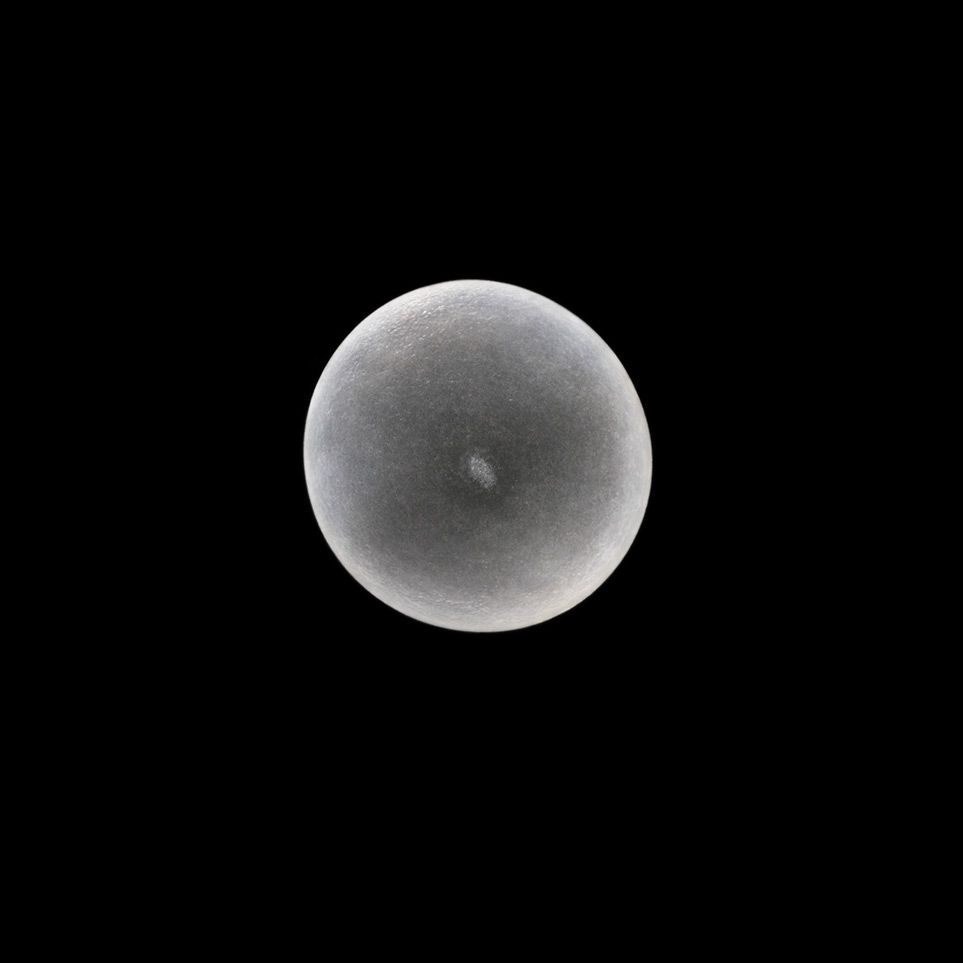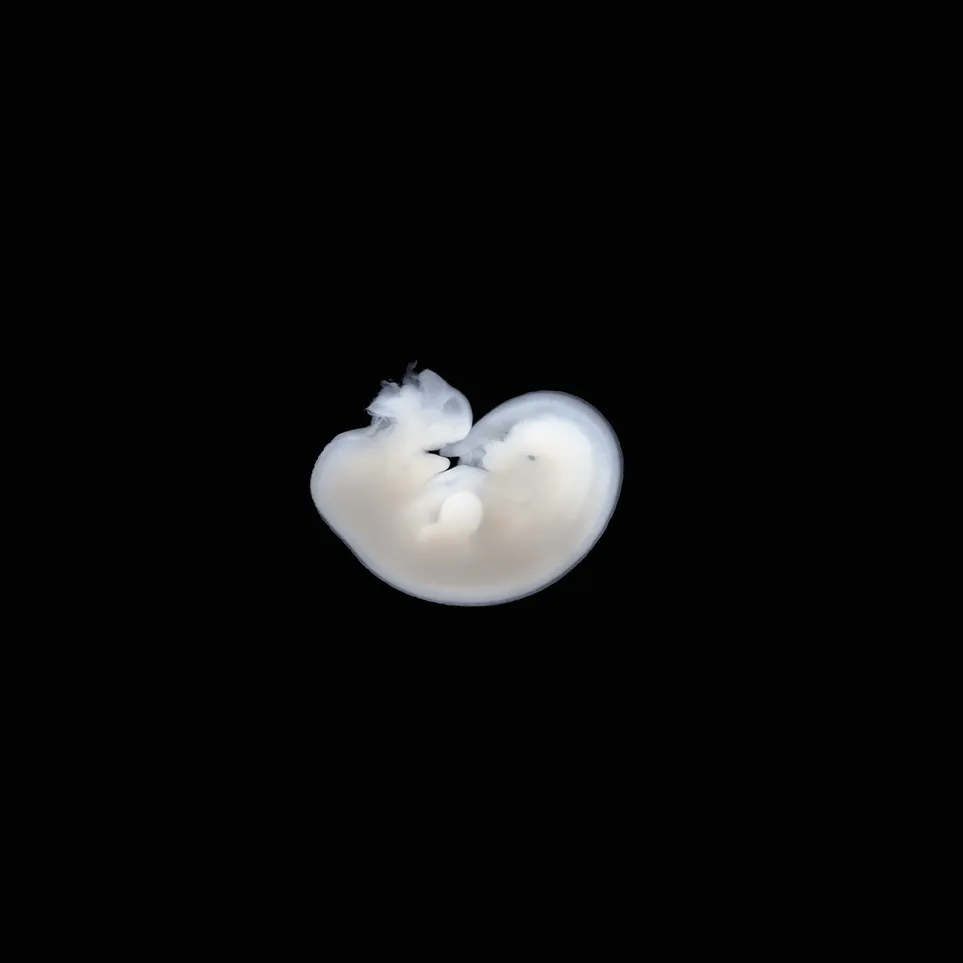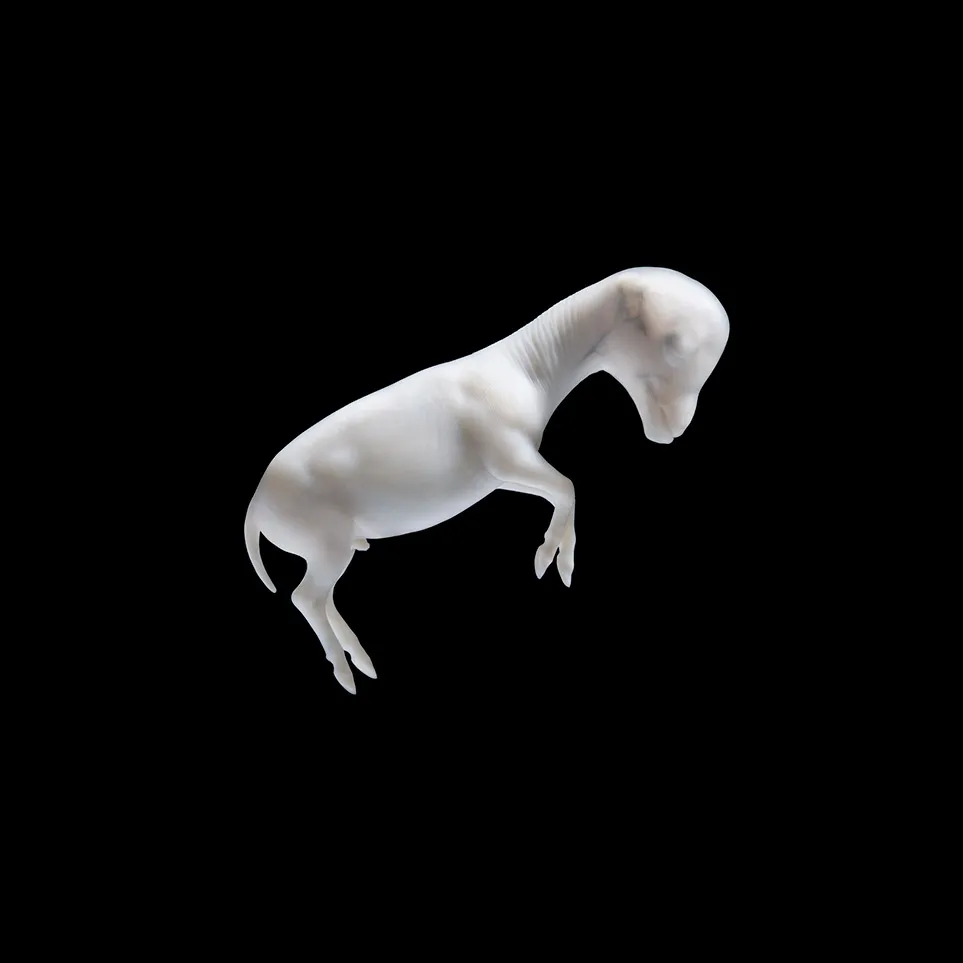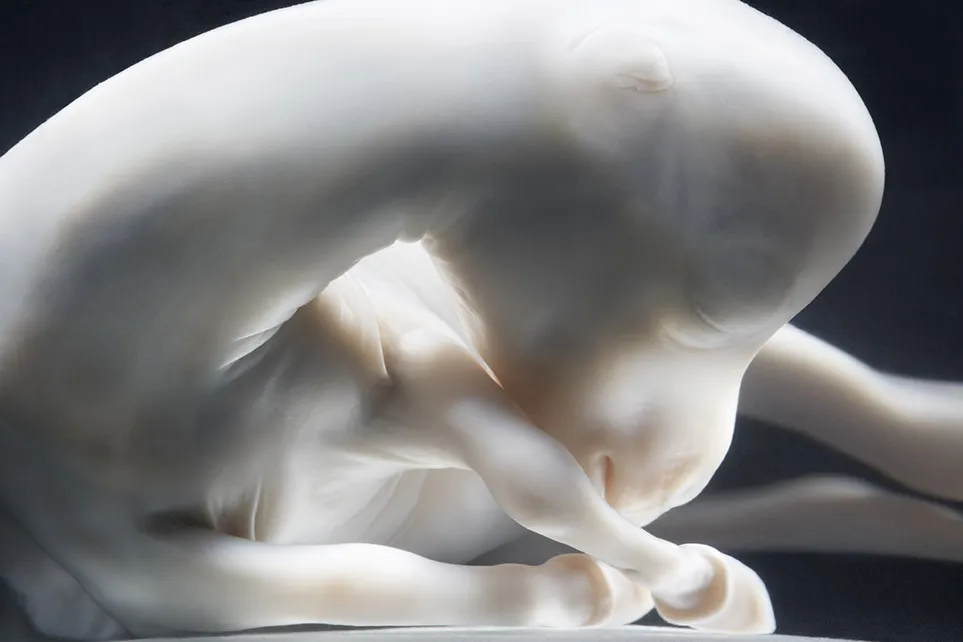The Serene Beauty of Horses in the Womb
Photographer Tim Flach sees similarities between baby equines and humans
“Early humans went into caves and rendered pictures of horses,” says Tim Flach. “It’s an animal that is partnered with us.” Flach, a 55-year-old photographer in London, explores that relationship without including human beings in the pictures. Instead, he has suggested the interspecies bond through stylized portraits of horses wearing medieval armor or racing colors.
Flach’s most intimate treatment of the subject—his documentation of the gestation of a horse—even reveals a biological resemblance. In its earliest, undifferentiated days, the milky white form might appear to be that of either human or equine. But by day 85 the graceful, 5.5-inch-long figure—suspended in formalin and photographed through a glass container—is undeniably a horse. “I hope it inspires a sense of awe,” Flach says. “You’re seeing something in its design stages.”



